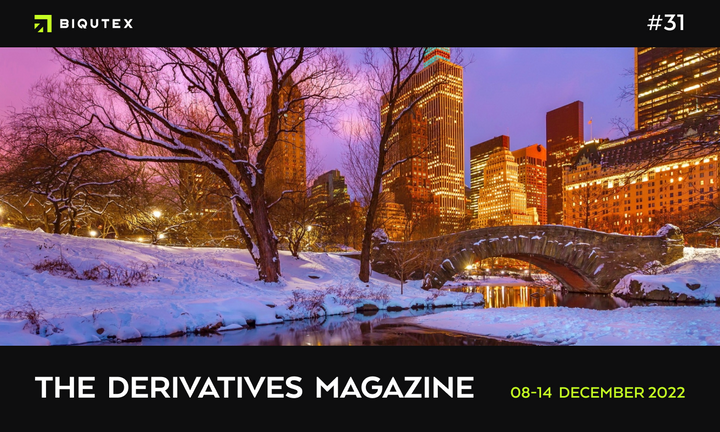The Derivatives Magazine #3

Another 5% decline in the crypto market was offset by a quick and sharp rise at the start of this week. Despite the loss of value by most quotations amid lower liquidity over the weekend, Bitcoin gained more than 7% from last week’s lows in the Asian session.
The trading floors at the end of last week saw an opposite dynamic for the stock and crypto markets. Cryptocurrencies have recently seen an elevated level of correlation with US equity indices. This week, however, after the publication of the Federal Reserve’s meeting protocols, this pattern broke down and the difference in dynamics was as high as 10% for Bitcoin and 18% for Ethereum.
Despite hitting a local low and relatively high volatility, the number of bitcoins on exchanges’ balance sheets continues to decline. It has reached a historical low of 2 460 000 BTC, according to analytics service CryptoQuant. It should also be noted that in a recent letter to shareholders, Coinbase crypto exchange pointed out that trading volume on its platform by institutional customers amounts to 76%. This fact largely explains the high correlation with the stock market, and may partially confirm the hypothesis of large holders accumulating more and more BTC, which is redeemed from the spot market.
The disruption of the established correlation led to a considerable amount of long position liquidations at a time of volatility, with the price level on the spot market falling below USD 28 000 at the moment of a volatility surge. Values were not as shocking as in the panic moments of early May, yet reached levels of over USD 224 million.
The perpetual swaps market saw a significant influx of liquidity at the start of this week, with trading volume in bitcoin futures doubling on major exchanges after the weekend. Binance with 3.2 billion USD/USDT and Bybit with 1.7 billion USD/USDT are the leaders in terms of trading volume.
The futures market is in contango, with quarterly futures (execution in June and September) being the most popular. The funding rate for long-term derivatives has stabilised and is currently in the 1% to 4% range. In short-term futures, on the other hand, the rate is negative, with contracts maturing within a week or three ranging from -1% to -4%.
Options trading was slightly ahead of events on the spot market. Unlike in the last survey, the focus on call options was much higher this time, especially given the expiry of monthly options on May 27. With cryptocurrencies and the stock market less correlated on Friday, the 31k and 32k call options with execution dates of June 3 and June 10 saw a significant spike in trading volume.
The markets are currently in a modestly positive mood: following the release of the Federal Reserve protocols, traditional markets are expecting a soft and gradual rate hike of 0.5% for the next two meetings. However, despite this, long-term stress factors remain on the agenda – inflation, falling GDP, raw material shortages and high food prices continue to put pressure on the overall situation.
This overview was prepared by the analytics department of the Biqutex crypto derivatives exchange



